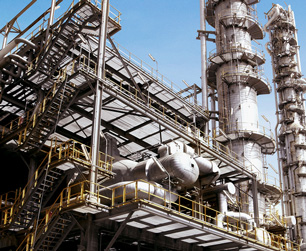Mutagen X and MX Analogues

Mutagen X is a chemical that forms as a byproduct of chlorine reacting with organic matter in drinking-water. It has no commercial uses, and is produced intentionally only in laboratories where it is studied.
Its enigmatic name comes from the fact that its chemical makeup was unclear until scientists were able to develop a method of synthesizing it in laboratories. It's also referred to as MX, or by its chemical name, 3-chloro-4-dichloromethyl-5-hydroxy-2(5H)-furanone. Its brominated analogue forms are commonly referred to as BMXs.
MX is difficult to detect in water, although it has been found in drinking water in the United States, Europe and Asia. The EPA reports that it is likely to appear at highest concentrations in treatment plants that use chlorine dioxide as the primary treatment method, since chlorine dioxide appears to not effectively destroy MX precursors. The World Health Organization reports that it is unlikely to appear in treated water at the high levels associated with its adverse health effects.
Health Effects of Mutagen X
In animal studies, Mutagen X has shown acute toxicity on the liver and kidneys. It is also a potential carcinogen, with animal studies showing carcinogenicity and evidence that it can cause DNA and chromosomal damage.
Brominated forms of MX (BMXs) may be even more hazardous. According to the EPA, “brominated species of [disinfection by-products] have been shown to be significantly more carcinogenic than their chlorinated analogues.”
Water Treatment for Mutagen X
According to the IARC, Mutagen X may be treated with activated carbon.
Sources: EPA, WHO, IARC, Wikipedia, Photo: WikiMedia, author: Secl
Site Index
Filtration Systems
- Aeration for Iron & Sulfide
- Backwashing Filters
(whole house & well units)
- Chlorine & Chemical Injectors
- Countertop Water Filters
- Garden Hose Filters
- Reverse Osmosis, Residential
- Reverse Osmosis, Commercial
- Shower Filters
- Specialty Filters
- Ultraviolet Systems
- Undersink Filters
- Water Softeners
- Whole House Filters
Cartridges
Parts
- Replacement Parts
- Faucets
- Filter Media
- Fittings
- Housings
- O-rings
- Pumps
- Pura UV
- R.O. Parts
- R.O. Tanks
- R.O. Booster Pump
- VIQUA UV